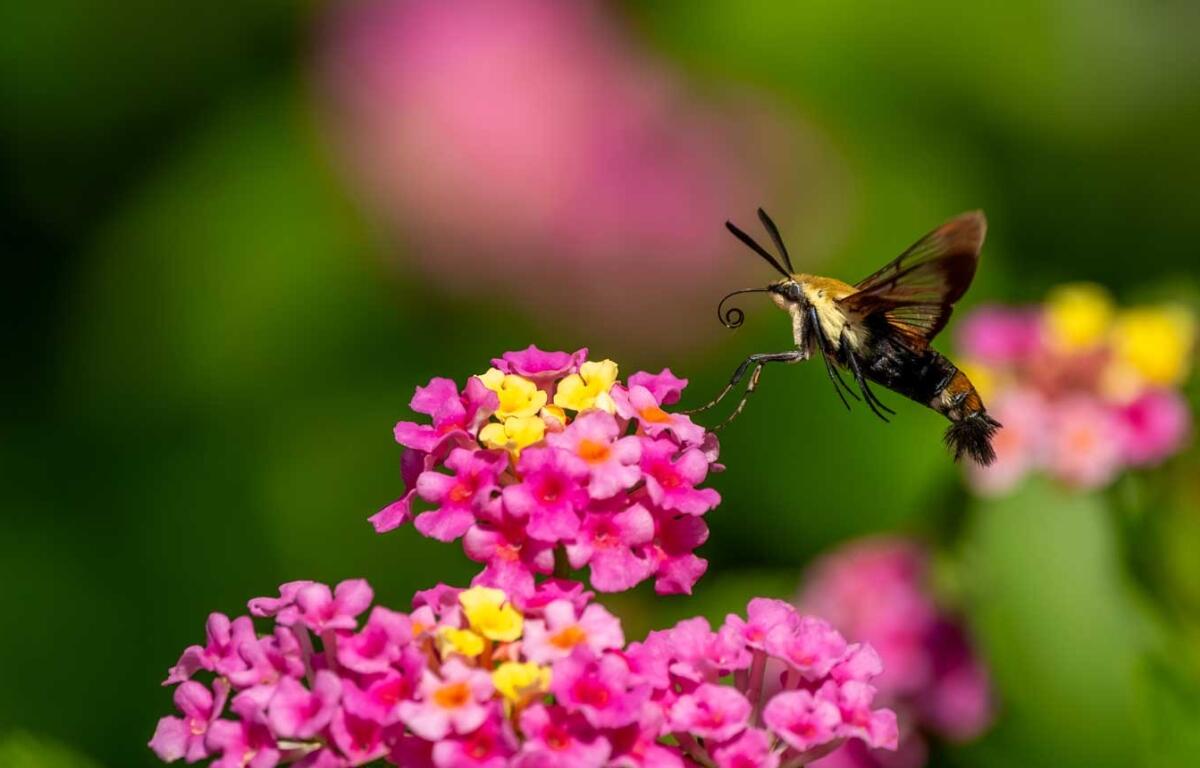ARLINGTON, VA (Virginia Farm Bureau)—Even unpleasant bugs have an important role to play.
While moths, flies, beetles and wasps may drive away picnic guests, they’re as essential as butterflies, bumblebees and other ecological wonders. They help pollinate garden plants, devour pests, break down organic matter and nourish other essential wildlife.
“Insects are the primary drivers of our ecosystems,” noted Elaine Mills, Virginia Cooperative Extension Master Gardener and pollinator specialist. “If they aren’t here, we won’t be here.”
Almost 75% of all flowering plants and one-third of all foods and beverages rely on moths and other essential pollinators, according to the nonprofit Pollinator Partnership.
There are around 400 species of moths in Virginia compared to about 170 butterfly species.
“But the caterpillar stage is the most critical for the foundation of the food web—96% of bird species rely on caterpillars to feed their young,” Mills noted.
Flies are the second-most efficient pollinators behind native bees. While the adults transfer pollen from foraging, the larvae feed on aphids in the garden.
Beetles were the first pollinators, and they keep alive Mesozoic-era species like magnolias and spicebush. These flightless bugs aren’t the most efficient pollinators, but some species—like ladybugs and ground beetles—have a productive appetite for pest insects.
Wasps are the evolutionary ancestors of bees and help pollinate when visiting flowers for nectar. Many are solitary and non-aggressive, but they all have benefits—helping control pests like the tobacco hornworm.
The larvae of yellow jackets serve as prey for various birds and mammals, and millipedes help break down organic matter in gardens.
A flourishing future depends on these unsung heroes, but their existence is threatened by habitat loss, pesticide use and climate change. The Virginia Department of Wildlife Resources Wildlife Action Plan identifies 60 pollinators that are considered a Virginia Species of Greatest Conservation Need.
Gardeners can help preserve essential moth populations by incorporating a variety of native plants to support caterpillars, including asters, birches, blueberry shrubs, cherry trees, sunflowers and willow trees. Oak trees act as host plants for over 500 species of caterpillars.
Mills recommends nourishing nocturnal moths with pale or white, night-scented and tubular flowers like garden phlox, evening primrose and common yucca.
Gardeners can support flies by growing red trillium, wild ginger, pawpaw or other plants with dark brown, purple or pale flowers.
Beetles prefer open flowers with white, cream or green coloring and a spicy, fruity or fetid fragrance—like sweet bay magnolia, Carolina allspice and Jack-in-the-pulpit.
Beneficial wasps are drawn to white or yellow flowers, including Common boneset, Virgin’s Bower and rattlesnake master.
Mills encourages gardeners to buy untreated plants from a reputable nursery, and avoid planting invasive species and using pesticides. Retain leaf litter for overwintering larvae, and leave dead trees or fallen logs for cavity nesters.
For more information on supporting unsung heroes, Mills recommends visiting homegrownnationalpark.org and pollinatorsnativeplants.com. Watch Mills’ recorded webinar on “Partnering with Pollinators” at mgnv.org.




